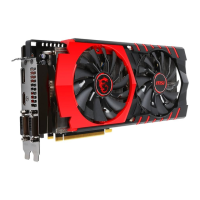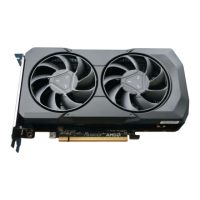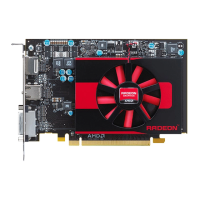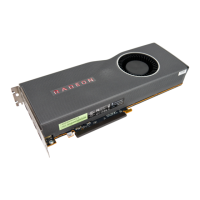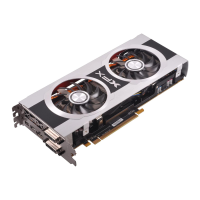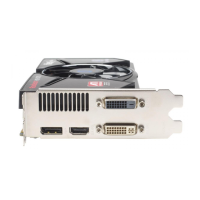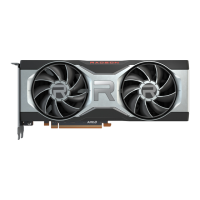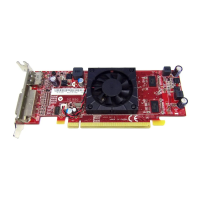3.3.1 Multi-Display Support
Your AMD Radeon™ R9 380 Series graphics card provides display functionality for up
to six displays through AMD Eyefinity multi-display technology and any combination
of the following:
•
First three displays can be connected to any display connection on your graphics
card.
•
Additional displays must be connected to the DisplayPort connection either
natively or through an active DisplayPort adapter.
Multiple DisplayPort displays can also be connected to a DisplayPort connection
through a DisplayPort 1.2 Multi-Stream Transport (MST) hub or daisy-chain
configuration.
Hubs and displays in this setup must be capable of the DisplayPort 1.2 standard.
The following table shows some examples of multiple display configurations; (A)
indicates an active adapter is used and (P) indicates a passive adapter is used. Display
abbreviations are DP = DisplayPort, dDVI-D = dual-link DVI-D, dDVI-I = dual-link DVI-
I.
Table 3–2 Sample Display Configurations
Sample Display
Configuration
dDVI-I
Connector
dDVI-D
Connector
DP Connector HDMI
Connector
Total
Output
DP×6 - - 6 displays via DP
1.2 MST hub or
daisy chain
- 6
dDVI-I, dDVI-D,
DP×2, HDMI
Native Native 2 displays via DP
1.2 MST hub or
daisy chain
Native 5
dDVI-I, dDVI-D, DP,
HDMI
Native Native Native Native 4
dDVI-I, dDVI-D,
VGA, HDMI
Native Native DP to VGA (A) Native 4
VGA, HDMI, HDMI dDVI-D to VGA
(P)
- DP to HDMI (P) Native 3
For additional configuration information, visit http://www.amd.com/eyefinity.
3.4 Using Adapters
The following procedure describes how to connect a display to your graphics card
using an adapter.
1. Turn off your computer and display.
2. Plug the adapter into the connection from your AMD Radeon graphics card and
tighten the thumbscrews (if there are any).
3. Connect your display's cable to the adapter and tighten the thumbscrews (if
there are any).
4. Turn on your display first, then your computer.
Display Configuration 9
© 2016 Advanced Micro Devices, Inc. AMD Radeon™ R9 380 Series Graphics
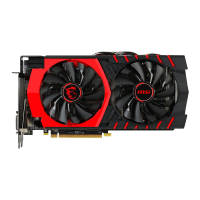
